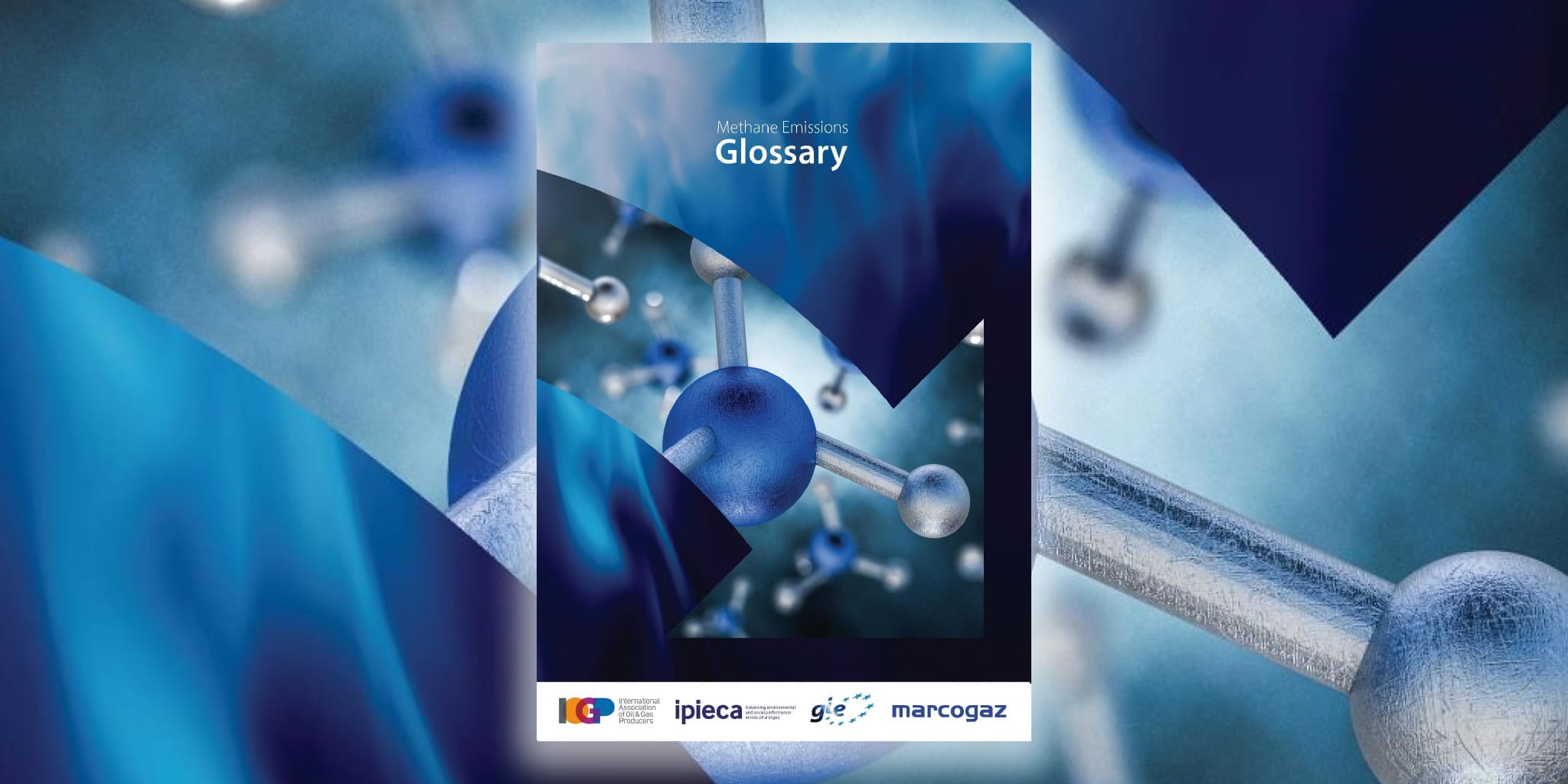Glossary
To support the industry and stakeholders in the use of consistent terminology, Ipieca, IOGP, GIE and MARCOGAZ prepared this methane emissions glossary covering the whole natural gas value chain.
Intended for policymakers and regulators working on methane regulation in Europe, this glossary will be updated to reflect new legislation and technologies.
(Note: Service line is usually a short, small diameter pipeline that delivers gas from distribution main or transmission pipeline to the customer. They are usually made of steel pipe or steel tubing (either cathodically protected or not), or plastic (usually polyethylene, but sometimes PVC or other plastic), although copper tubing was also used in the past. Service lines can be installed under or above ground. Note: Cathodic protection is a technique used to mitigate the corrosion of a metal surface by making it act as an electrical cathode)
References
[1] Directive 2009/73/EC of the European Parliament and of the Council of 13 July 2009
[2] EN-12186 – Gas infrastructure – Gas pressure regulating stations for transmission and distribution – Functional requirements
[3] EN-12327 – Gas infrastructure – Pressure testing, commissioning and decommissioning procedures – Functional requirements
[4] EN-12583 – Gas Infrastructure – Compressor stations – Functional requirements
[5] EN-15446 – Fugitive and diffuse emissions of common concern to industry sectors – Measurement of fugitive emission of vapours generating equipment and piping leaks
[6] GIE & MARCOGAZ Report “Potential ways the gas industry can contribute to the reduction of methane emissions” https://www.gie.eu/index.php/gie-publications/methane-emissions/methaneemission-report-2019/27786-gie-marcogaz-report-for-the-madrid-forum-potentialway-gas-industry-can-contribute-to-the-reduction-of-methane-emissions/file
[7] IPIECA/API/IOGP (2020). Oil and gas industry guidance on voluntary sustainability reporting https://www.ipieca.org/media/5105/ipieca_sustainability-guide_2020_glossary.pdf
[8] IPIECA Methane Glossary http://www.ipieca.org/resources/awareness-briefing/methane-glossary/
[9] ISO 14532 – Natural gas — Vocabulary
[10] JCGM-100 – Evaluation of measurement data – Guide to the expression of uncertainty in measurement. s.l.: Committee for Guides in Metrology (JCGM/WG 1), 2008
[11] MARCOGAZ – Assessment of methane emissions for gas Transmission and Distribution system operators, 2019 https://www.marcogaz.org/app/download/8161672063/WG_ME-485- Assessment+of+methane+emissions+for+gas+Transmission+and+Distribution+system+ operator.pdf?t=1602849054
[12] MARCOGAZ – Guidance for using the MARCOGAZ methane emissions reporting template – DSO, TSO, LNG receiving terminals and UGS https://www.marcogaz.org/app/download/8271109963/WG_ME710.pdf?t=1606988780
[13] MGP Reducing methane emissions: Equipment leaks https://methaneguidingprinciples.org/best-practice-guides/equipment-leaks/
[14] MGP Reducing methane emissions: Identification, detection, measurement and quantification https://methaneguidingprinciples.org/wp-content/uploads/2020/09/ReducingMethane-Emissions_Identification-Detection-Measurement-andQuantification_Guide.pdf
[15] MGP Reducing methane emissions: Transmission, storage, LNG terminals and distribution https://methaneguidingprinciples.org/wp-content/uploads/2020/09/ReducingMethane-Emissions-transmission-storage-LNG-terminals-and-distribution-Guide.pdf
[16] Oil and Gas Methane Partnership Technical Guidance Documents https://ccacoalition.org/en/content/oil-and-gas-methane-partnership-technicalguidance-documents
[17] Regulation (EC) No 715/2009 of the European Parliament and of the Council of 13 July 2009
[18] US EPA – ‘Method 21: Determination of volatile organic compound leaks’
